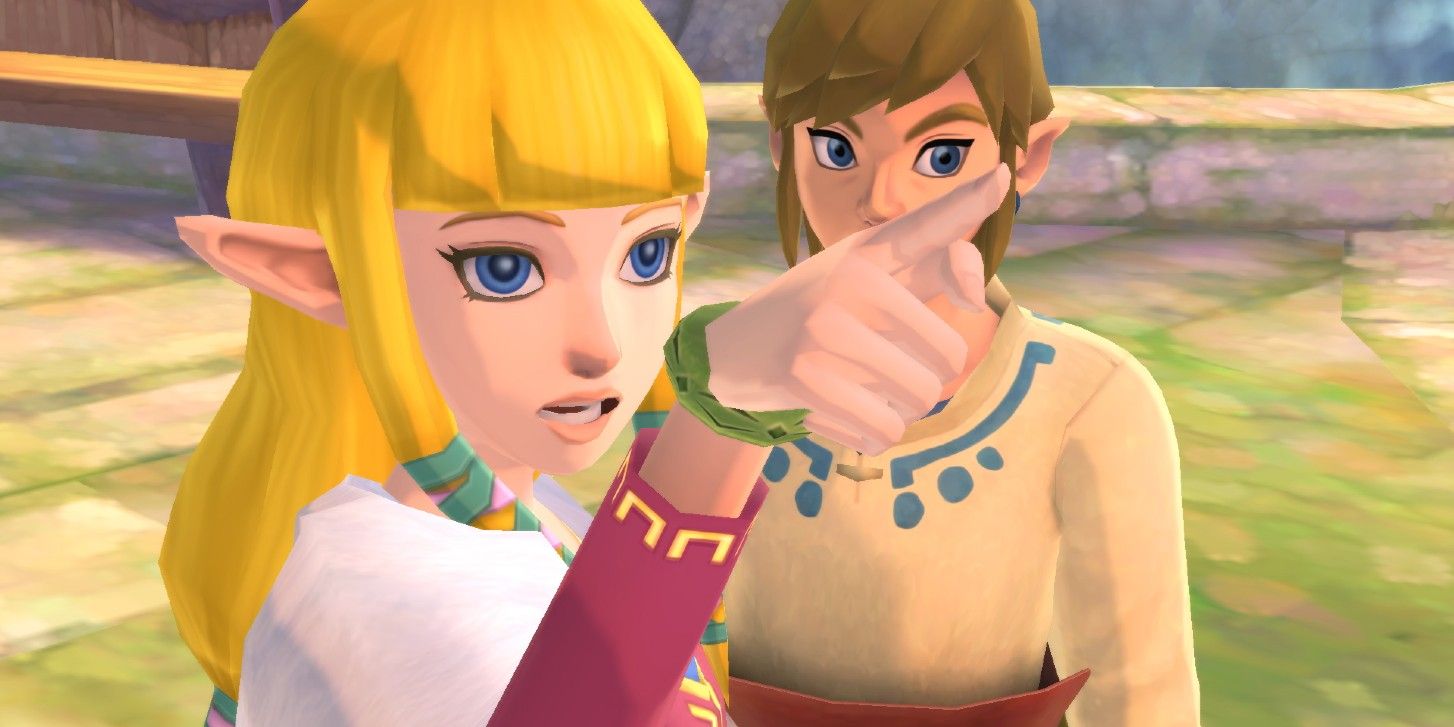
A YouTuber has revealed the graphical differences between Nintendo Switch's The Legend of Zelda: Skyward Sword HD when played docked, handheld, and with anti-aliasing. The upcoming release is a remaster of the 2011 original, with new improvements and quality-of-life updates including full camera controls for Skyward Sword HD and more.
The Legend of Zelda: Skyward Sword was originally built for the Nintendo Wii and utilized motion controls made possible with the WiiMotion Plus remote. Unlike The Legend of Zelda: Twilight Princess, which only used the standard Wii Remote, Motion Plus allowed for more precise directional movements and recognition, allowing players 1:1 control of Link's sword. While the original release's mandatory motion controls were widely criticized at the time, the HD remaster also offers traditional face-button and joystick controls for earliest game in the Zelda timeline this time around. Nintendo's marketing of Skyward Sword HD has focused on motion controls, though many players (especially those with Nintendo Switch Lite consoles) will likely opt for button controls.
YouTuber ElAnalistaDeBits has released a new video highlighting the visual differences players will experience in The Legend of Zelda: Skyward Sword HD should they choose to play handheld or in docked mode. As expected, the video shows a slight decrease in quality from 1080p to 720p when playing in handheld mode, which is only to be expected of a Switch title's performance. However, both variations pale in comparison to a simulated version of the game with added anti-aliasing, achieved using the hardware tool mClassic. The tool adds anti-aliasing to a given image, ridding it of jagged pixelation, and rescales it to reveal how clean the game could (and probably should) look in 2021. Using mClassic, anti-aliasing dramatically improves the visuals of Skyward Sword HD, providing a much crisper look.
Click here to watch the Legend of Zelda: Skyward Sword HD graphics comparison video.
Unfortunately, the streamlined version of Skyward Sword HD shipped by Nintendo won't look as impressive as it does with the mClassic tool. According to ElAnalistaDeBits, the vanilla game's frame rate remains "practically consistent at 60fps in any of the modes" shown in the video, so while handheld and docked players likely won't be wowed, they'll still enjoy smooth performance regardless. For those unsure whether or not to play in handheld or docked mode, the YouTuber notes that "draw distance and anisotropic filtering also seem to undergo minor adjustments in handheld mode," but this isn't likely to visibly affect gameplay much.
No matter how players decide to begin their next Zelda adventure, Nintendo has made many quality of life improvements to Skyward Sword HD, improving on the original Wii version. As well as cutting down on repetitive screens when collecting items, the game will also allow players to ignore the AI helping hand, Fi. With many improvements over the original release, The Legend of Zelda: Skyward Sword HD should be the best way to experience the adventure, but maybe the next remaster can add some anti-aliasing to the mix.
The Legend of Zelda: Skyward Sword HD will be available for Nintendo Switch on July 16.
Source: ElAnalistaDeBits/YouTube
from ScreenRant - Feed https://ift.tt/3ek51Aj


0 Comments